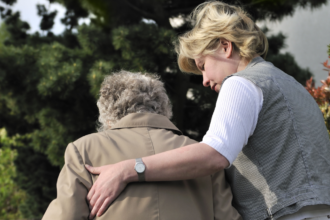From moldy vents to old ceiling tiles, your office might be hiding health hazards you’ve never noticed.
When we think of workplace hazards, images of construction sites or industrial plants often come to mind. Offices, by contrast, generally seem like safe havens. However, even seemingly benign office environments can harbor risks that impact employee health, safety, and productivity.
Being aware of these potential hazards is the first step towards creating a truly safe and healthy workspace for everyone. The goal isn’t to cause alarm, but to foster awareness and encourage proactive assessment of potential risks, ranging from the air you breathe to the materials composing the building itself.
Preventing Slips, Trips, and Falls
One of the most frequent categories of office incidents involves slips, trips, and falls. These often stem from seemingly minor issues: trailing electrical cords across walkways, loose or buckled carpeting, spills that aren’t promptly cleaned, uneven flooring, or even clutter left in aisles. Regular visual checks of common areas and personal workspaces can help identify and rectify these common physical hazards before an accident occurs.
Addressing Electrical Risks
Similarly, basic electrical safety can be overlooked. Overloaded power strips, frayed wires, improperly grounded equipment, or liquids placed too close to electrical devices all pose risks of shock or fire. Diligence in managing cords and checking electrical equipment condition is vital.
The Importance of Proper Ergonomics
Beyond immediate physical dangers, ergonomic issues are a pervasive source of discomfort and long-term injury in offices. Poorly adjusted chairs, monitors positioned at incorrect heights or angles, awkward keyboard and mouse placement, and prolonged static postures can contribute to musculoskeletal disorders (MSDs) affecting the back, neck, shoulders, and wrists. Encouraging proper workstation setup, providing adjustable furniture where possible, and promoting regular breaks for stretching and movement are crucial for mitigating these risks, which can significantly impact employee well-being and lead to chronic pain.
Hazards in the Air: Indoor Air Quality (IAQ) Concerns
Often invisible, Indoor Air Quality (IAQ) is another critical factor in office safety and health. Poor IAQ can result from inadequate ventilation, malfunctioning HVAC (Heating, Ventilation, and Air Conditioning) systems, or the presence of contaminants. Volatile Organic Compounds (VOCs) can off-gas from new furniture, carpets, paints, and cleaning supplies.
Mold in Older Workplaces
Mold growth can occur in damp areas, releasing spores that trigger allergies and respiratory issues. Dust and other particulates can also accumulate. Symptoms of poor IAQ can range from headaches, fatigue, and difficulty concentrating to more severe allergic reactions and respiratory problems. Ensuring proper ventilation, regular HVAC maintenance, using low-VOC materials where possible, and addressing any water leaks or dampness promptly are key to maintaining healthy air.
Legacy Risks: Outdated Building Materials
Furthermore, the very materials the office building is constructed from can present hazards, particularly in older structures.
- The Hidden (and Ongoing) Danger of Asbestos: Buildings constructed before the 1980s may contain asbestos in materials like insulation, ceiling tiles, floor tiles, or pipe wrap. If these materials are in good condition and undisturbed, they generally don’t pose a risk. However, if they are damaged or disturbed during maintenance, renovation, or demolition, asbestos fibers can become airborne. Inhaling these fibers can lead to serious lung diseases, including cancer, decades later.
- Lead Paint Concerns: Similarly, older buildings might have layers of lead-based paint. Dust or chips from disturbed lead paint can be ingested or inhaled, posing significant health risks, especially to children, but also to adults.
While office workers typically aren’t directly involved in disturbing these materials, awareness is crucial. Any planned renovation or significant maintenance in older buildings necessitates professional assessment and handling by certified experts to manage these risks safely.
Essential Final Checks: Lighting and Fire Safety
Finally, consider factors like adequate lighting to prevent eyestrain and ensuring emergency exits and fire safety equipment (like extinguishers and alarms) are unobstructed, clearly marked, and functional. While these might seem basic, regular checks are essential components of a safe office environment.
Conclusion: A Shared Responsibility
Creating a safe office environment is a shared responsibility. By being observant, understanding potential risks—from obvious trip hazards to hidden concerns like air quality and outdated building materials—and reporting concerns to management or facilities personnel, employees and employers can work together. Proactive assessment and addressing potential hazards before they cause harm contributes significantly to a healthier, safer, and more productive workplace for everyone.
Beyond individual vigilance, cultivating a culture of safety means embedding routine checks and transparent communication into everyday workflows. Scheduled walkthroughs, periodic indoor-air-quality testing, and ergonomic refreshers can catch emerging issues before they escalate. Management should allocate resources for preventative maintenance—whether that’s replacing outdated wiring, sealing an unexpected roof leak, or hiring certified abatement contractors when asbestos or lead is suspected. When companies demonstrate this commitment, employees feel valued, productivity rises, and everyone benefits.














